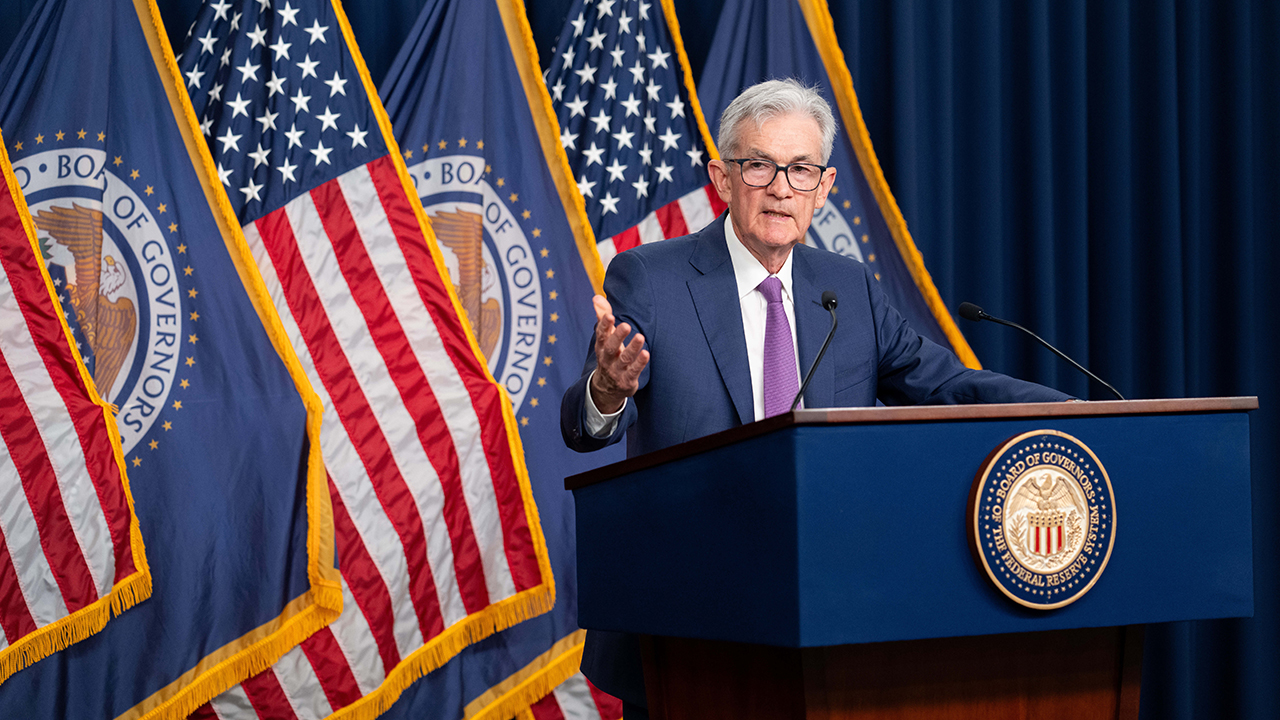Fed's Powell: Prices are ‘back on disinflationary path,’ but more confidence is needed
Fed's Powell speaks at central bank forum in Portugal
Chair Powell is happy with the Federal Reserve's trajectory on rate cuts, analyst says
KPMG chief economist Diane Swonk reacts to the Federal Reserve's decision to leave interest rates unchanged on 'The Claman Countdown.'
Federal Reserve Chair Jerome Powell said Tuesday that policymakers have made "quite a bit" of progress on fighting inflation, but he needs to see more evidence before starting to reduce interest rates.
Speaking during a central bank forum in Sintra, Portugal, Powell said inflation reports from April and May show price pressures are fading from the economy – and reiterated that the Fed wants that progress to continue.
"I think the last reading, and the one before it to a lesser extent, do suggest that we are getting back on a disinflationary path," he said. "We want to be more confident that inflation is moving sustainably down to 2% before we start the process of loosening policy."
Officials voted at their most recent meeting in May to hold interest rates steady at a range of 5.25% to 5.5%, the highest level since 2001. Although policymakers left the door open to rate cuts later this year in their post-meeting statement, they also stressed the need for "greater confidence" that inflation is coming down before easing policy.
FED HOLDS RATES STEADY AT 23-YEAR HIGH, PROJECTS JUST ONE CUT THIS YEAR

Federal Reserve Chair Jerome Powell responds to a question during a meeting of The Economic Club of Washington, at the Renaissance Hotel in Washington, D.C. (Amanda Andrade-Rhoades/File Photo / Reuters Photos)
Since then, there has been some evidence that inflation is starting to ease again. The May personal consumption index showed that inflation had cooled slightly to 2.6%, from a high of 7.1%. At the same time, core prices – which are more closely watched by the Fed because they strip out volatile measurements like food and energy – also climbed 2.6%, the slowest annual rate since March 2021.
"That represents really significant progress," Powell said. "We've made a lot of progress. We just want to understand that the levels that we're seeing are a true reading of what's happening with underlying inflation."
WHY CAN'T YOU FIND A HOUSE FOR SALE?
| Ticker | Security | Last | Change | Change % |
|---|---|---|---|---|
| I:DJI | DOW JONES AVERAGES | 48710.97 | -20.19 | -0.04% |
| I:COMP | NASDAQ COMPOSITE INDEX | 23593.096622 | -20.21 | -0.09% |
| SP500 | S&P 500 | 6929.94 | -2.11 | -0.03% |
Both of those figures remain above the Fed's 2% target.
Policymakers raised interest rates sharply in 2022 and 2023 to the highest level since the 1980s in a bid to slow the economy and cool inflation. Officials are now grappling with when they should take their foot off the brake.
Powell said officials are trying to balance the risks between cutting interest rates too soon, which risks setting off inflation again, or waiting too long to cut rates, which could weigh on the economy and possibly trigger a recession.
"We're well aware that if we go too soon, that we could undo the good work we've done to bring it down," he said. "And if we go too late, we could unnecessarily undermine the recovery and the expansion. And so we're aware that we have two-sided risks, more so than we did a year ago."

Federal Reserve Chair Jerome Powell attends a press conference in Washington, D.C., on May 1, 2024. (Liu Jie/Xinhua via / Getty Images)
Most investors now expect the Fed to begin cutting rates in September or November and are penciling in just two reductions this year — a dramatic shift from the start of the year, when they anticipated six rate cuts beginning as soon as March.
GET FOX BUSINESS ON THE GO BY CLICKING HERE
Higher interest rates tend to create higher rates on consumer and business loans, which then slow the economy by forcing employers to cut back on spending. Higher rates have helped push the average rate on 30-year mortgages above 8% for the first time in decades. Borrowing costs for everything from home equity lines of credit, auto loans and credit cards have also spiked.





















